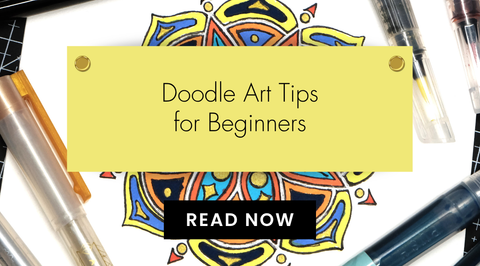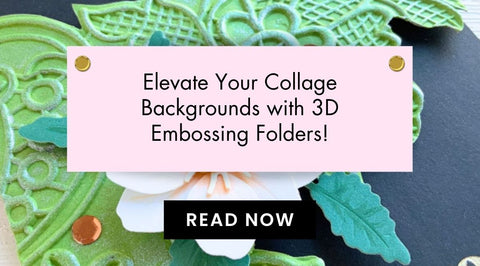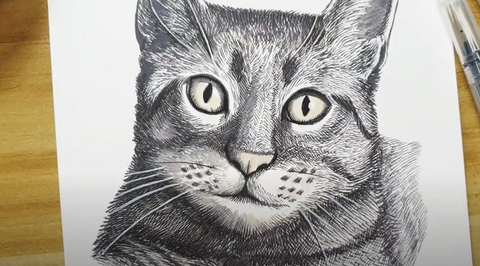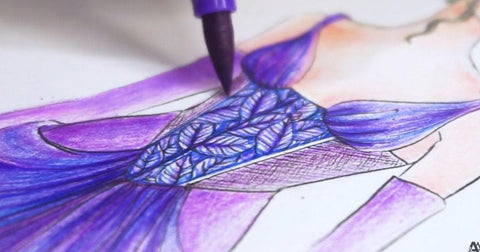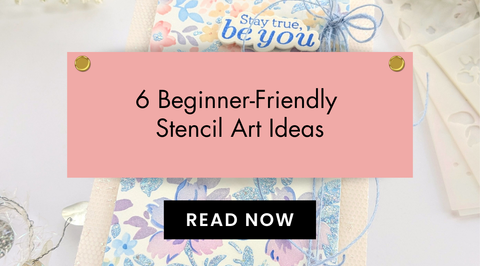4 Cost-Effective Watercolor Supplies If You’re on a Budget
Last Updated: August 8, 2024
Are you an aspiring artist looking to venture into the world of watercolor painting? Perhaps you're concerned about the cost of supplies and whether you can achieve professional results on a budget.

Learn how to improve your watercolor skills in this quick video tutorial.
In this blog post, we'll explore 4 cost-effective watercolor supplies that are perfect for beginners on a budget. From paints to brushes, we've got you covered with essential tools that won't break the bank.

Understanding Watercolor Painting for Beginners
Watercolor painting is a beautiful and versatile medium that allows artists to create stunning works of art. It's known for its transparent and luminous qualities, making it a popular choice for both beginners and experienced artists. However, getting started with watercolor painting can seem daunting, especially when it comes to finding affordable supplies that still deliver professional results.


Why Choose Affordable Watercolor Supplies?
Investing in affordable watercolor supplies is ideal for beginners for several reasons:
- Cost-Effective: As a beginner, you may not want to invest a significant amount of money in expensive supplies until you're more experienced.
- Experimentation: Affordable supplies allow you to experiment with different brands and types of paints, brushes, and paper to find what works best for you.
- Learning Curve: As you learn and develop your skills, you may find that your preferences for supplies change, making affordable options a practical choice.
Now that we understand the benefits of affordable watercolor supplies, let's delve into the essential watercolor tools you'll need to kickstart your watercolor painting journey without breaking the bank.
Essential Watercolor Tools for Beginners on a Budget

Watercolor Paints: Tubes vs Pans
When it comes to watercolor paints, beginners often find themselves torn between tubes and pans. Both options have their pros and cons, so let's take a closer look at each:
- Ideal for artists who prefer a more concentrated and vibrant color palette
- Great for mixing custom colors and achieving bold, intense hues
- Easy to control the amount of paint used, minimizing waste
- Perfect for larger-scale paintings and washes
Sign up for this FREE Watercolor Tubes 101 Online Class for Beginners

- Convenient and portable, making them perfect for on-the-go painting
- Ideal for artists who prefer a softer, more translucent color application
- Great for quick sketches and outdoor painting sessions
- Less wasteful as the paint can be easily reactivated with water

Comparison Table: Tubes vs. Pans
| Features | Tubes | Pans |
| Color Intensity | Concentrated and vibrant | Softer and more translucent |
| Mixing Capabilities | Ideal for custom colors | Convenient for quick sketches |
| Portability | More portable due to packaging | Less wasteful, easily reactivated |
| Waste Minimization | Easy to control the amount of paint used | It might not be easy to control the amount of paint used |
Ultimately, the choice between tubes and pans comes down to personal preference and painting style. For beginners on a budget, investing in a basic set of either tubes or pans from a reputable brand can provide high-quality pigments without breaking the bank.

Bonus: Liquid Watercolor Brush Markers
If you're an artist looking for a flexible and easy-to-use alternative to traditional watercolor paints, liquid watercolor brush markers might just be the perfect fit for your creative toolkit.

Here’s why you should give them a try:
| Portability | Versatility | Color Range |
| Compact and mess-free, making them perfect for travel and outdoor painting sessions | Can be used directly as a marker for precise lines and details | Available in a wide range of vibrant colors, providing endless creative possibilities |
| Eliminate the need for carrying water cups and palettes, simplifying the painting process | Easily blendable with water to create beautiful washes and gradients | Perfect for artists who enjoy mixed media techniques and adding details to their watercolor paintings |

Watercolor Paper
Choosing the right watercolor paper is crucial for achieving that professional look without overspending. The paper you select can significantly impact your artwork's texture and overall quality. Here are some important factors to consider when looking for affordable watercolor paper:
Weight
- Opt for paper that is at least 140lb (300 gsm) to prevent warping and buckling when using wet washes
- Heavier weight paper allows for more layering and reworking without deterioration
Texture
- Cold-pressed paper provides a balanced texture suitable for various painting techniques
- Rough paper offers more pronounced texture, ideal for creating expressive and dynamic effects
- Hot-pressed paper has a smooth surface, perfect for detailed work and fine lines
Sizing
- Look for acid-free and archival-quality paper to ensure longevity and color preservation
- Pre-stretched or block-bound paper eliminates the need for stretching before painting, saving time and effort

By prioritizing these factors, you can find affordable watercolor paper that meets your needs without compromising on quality.
Watercolor Paint Brushes
When it comes to watercolor painting, having the right brushes can make all the difference in achieving those beautiful, expressive strokes.


If you’re on the hunt for affordable watercolor brushes, here are some key things to consider:
| Bristle Type | Shape and Size | Handle and Ferrule |
| Natural hair brushes such as sable or squirrel offer superior water retention and smooth application | Round brushes are versatile and suitable for various techniques such as washes, detailing, and line work | Look for brushes with sturdy and comfortable handles that provide good control |
| Synthetic brushes are more affordable and suitable for beginners, providing consistent performance without sacrificing quality | Flat brushes are ideal for covering larger areas and creating sharp edges | A secure ferrule ensures that the bristles remain intact during use, preventing shedding and prolonging the brush's lifespan |
| Detail brushes are perfect for intricate work and fine details |
Watercolor Coloring Book
Watercolor coloring books are an excellent resource for beginners venturing into the world of watercolor painting. These books feature ready-to-use designs that eliminate the intimidation often associated with starting a new art form.

With intricate yet accessible illustrations, they provide a structured way to practice various techniques without the pressure of creating an original composition. The pre-drawn outlines allow artists to focus on mastering color blending, layering, and brush control, making it easier to experiment and gain confidence. Additionally, the variety of themes and styles available ensures that there’s something for everyone, making watercoloring not only a relaxing pastime but also a fun way to develop artistic skills.

Start Watercoloring with These Cost-Effective Supplies
Watercolor painting for beginners on a budget is entirely achievable with the right selection of affordable supplies. By opting for student-grade paints, synthetic brushes, and quality watercolor paper, you can explore this beautiful medium without overspending. Remember to experiment with different brands and types of supplies to find what works best for you as you continue to develop your skills as an artist. With these cost-effective tools at your disposal, you'll be well on your way to creating stunning watercolor paintings without breaking the bank.
Drop by The Creative Corner for more beginner-friendly watercolor tips and ideas. Happy painting!




